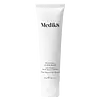What's inside
What's inside
 Key Ingredients
Key Ingredients

 Benefits
Benefits

 Concerns
Concerns

 Ingredients Side-by-side
Ingredients Side-by-side

Water
Skin ConditioningZinc Oxide
Cosmetic ColorantC12-15 Alkyl Benzoate
AntimicrobialCoco-Caprylate
EmollientPropanediol
SolventButyloctyl Salicylate
Skin ConditioningTridecyl Salicylate
Skin ConditioningSimmondsia Chinensis Seed Oil
EmollientGlyceryl Behenate
EmollientIsopropyl Isostearate
EmollientPolyester-7
Skin ConditioningSqualane
EmollientGlyceryl Stearate
EmollientNeopentyl Glycol Diheptanoate
EmollientSilica Silylate
EmollientPolyglyceryl-3 Ricinoleate
EmulsifyingIsodecyl Salicylate
Skin ConditioningDimethiconol
EmollientTrilaureth-4 Phosphate
EmulsifyingSodium Chloride
MaskingSodium Hyaluronate
HumectantAllantoin
Skin ConditioningBisabolol
MaskingCamellia Sinensis Leaf Extract
AntimicrobialGlycerin
HumectantVitis Vinifera Seed Extract
AntimicrobialTocopherol
AntioxidantPhenylpropanol
MaskingCaprylyl Glycol
EmollientWater, Zinc Oxide, C12-15 Alkyl Benzoate, Coco-Caprylate, Propanediol, Butyloctyl Salicylate, Tridecyl Salicylate, Simmondsia Chinensis Seed Oil, Glyceryl Behenate, Isopropyl Isostearate, Polyester-7, Squalane, Glyceryl Stearate, Neopentyl Glycol Diheptanoate, Silica Silylate, Polyglyceryl-3 Ricinoleate, Isodecyl Salicylate, Dimethiconol, Trilaureth-4 Phosphate, Sodium Chloride, Sodium Hyaluronate, Allantoin, Bisabolol, Camellia Sinensis Leaf Extract, Glycerin, Vitis Vinifera Seed Extract, Tocopherol, Phenylpropanol, Caprylyl Glycol
Zinc Oxide
Cosmetic ColorantCaprylic/Capric Triglyceride
MaskingRicinus Communis Seed Oil
MaskingCoco-Caprylate
EmollientCocos Nucifera Oil
MaskingEuphorbia Cerifera Cera
AstringentHydrogenated Castor Oil
EmollientPolyglyceryl-3 Polyricinoleate
EmulsifyingTocopheryl Acetate
AntioxidantIsostearic Acid
CleansingRosa Rubiginosa Seed Oil
EmollientLemongrass Oil
Camellia Oleifera Seed Oil
Skin ConditioningTerminalia Ferdinandiana Fruit Extract
AntioxidantZinc Oxide, Caprylic/Capric Triglyceride, Ricinus Communis Seed Oil, Coco-Caprylate, Cocos Nucifera Oil, Euphorbia Cerifera Cera, Hydrogenated Castor Oil, Polyglyceryl-3 Polyricinoleate, Tocopheryl Acetate, Isostearic Acid, Rosa Rubiginosa Seed Oil, Lemongrass Oil, Camellia Oleifera Seed Oil, Terminalia Ferdinandiana Fruit Extract
Ingredients Explained
These ingredients are found in both products.
Ingredients higher up in an ingredient list are typically present in a larger amount.
Coco-Caprylate is created from fatty coconut alcohol and caprylic acid.
It is a lightweight emollient. Emollients create a thin barrier on the skin to trap moisture in. This helps keep your skin hydrated and soft.
Once applied, Coco-Caprylate is absorbed quickly and leaves a silky feel. It may help solubilize other ingredients, or help other ingredients be dispersed evenly.
Coco-Caprylate may not be fungal acne safe.
Learn more about Coco-CaprylateZinc Oxide is a mineral broad-spectrum UV filter; it is the broadest UVA and UVB reflector approved by the FDA. It also has skin protectant and skin soothing properties.
Zinc oxide is one of the most effective broad-spectrum UV filters. It protects against UVB, UVAII, and UVAI. In comparison to its counterpart titanium dioxide, zinc oxide provides uniform and extended UVA protection.
Another great benefit? This ingredient is highly photostable so it won't degrade easily under sunlight.
A common myth is that mineral UV filters are widely believed to primarily reflect UV light.
However, modern research shows titanium dioxide absorbs UV radiation like chemical filters (~95% absorption & 5% reflection).
Zinc oxide has great skin soothing properties so you'll likely find this in sunscreens formulated for sensitive skin or babies/children. It is unlikely to cause "eye sting" like other sunscreen ingredients.
Regulatory agencies consider zinc oxide to be non-toxic and safe. It has also been shown to not penetrate the skin.
Unfortunately, this ingredient does leave a visible white cast. This is why mineral sunscreens are often less cosmetically elegant than chemical or hybrid ones.
In cosmetics, zinc oxide can be found in both non-nano and nano-sized forms. The nano version is used to reduce white cast and improve the texture of sunscreen formulas.
There are ongoing concerns surrounding nano-zinc oxide's impact on marine ecosystems and whether it can be absorbed into skin.
Regarding marine ecosystems and coral reefs, there is no conclusive evidence that any form of zinc oxide (or any other sunscreen ingredients) will cause harm. The science is still developing but many consumers are keeping a close eye on this issue.
Please note, many destinations have reef-safety sunscreen rules. For instance, the U.S. Virgin Islands advises all visitors to use non-nano mineral sunscreens.
There has also been some stir about whether micronized or nano zinc oxide has potential photoxicity and absorption through the skin/lungs.
An in-vitro (done in a test tube or petri dish) study demonstrated micronized zinc oxide to have potential phototoxicity. There's no need to fret; the EU Commission's Scientific Committee on Consumer Safety has stated, "The relevance of these findings needs to be clarified by appropriate investigations in vivo." Or in other words, further studies done on living organisms are needed to prove this.
Current research shows zinc oxide nanoparticles do not penetrate intact or sunburned skin. They either remain on the surface or in the outermost layer of dead skin (stratum corneum).
Zinc oxide is one of only two classified mineral UV filters with titanium dioxide being the other one.
Fun fact: Zinc has been used throughout history as an ingredient in paint and medicine. An Indian text from 500BC is believed to list zinc oxide as a salve for open wound. The Ancient Greek physician Dioscorides has also mentioned the use of zinc as an ointment in 1AD.
Learn more about Zinc Oxide